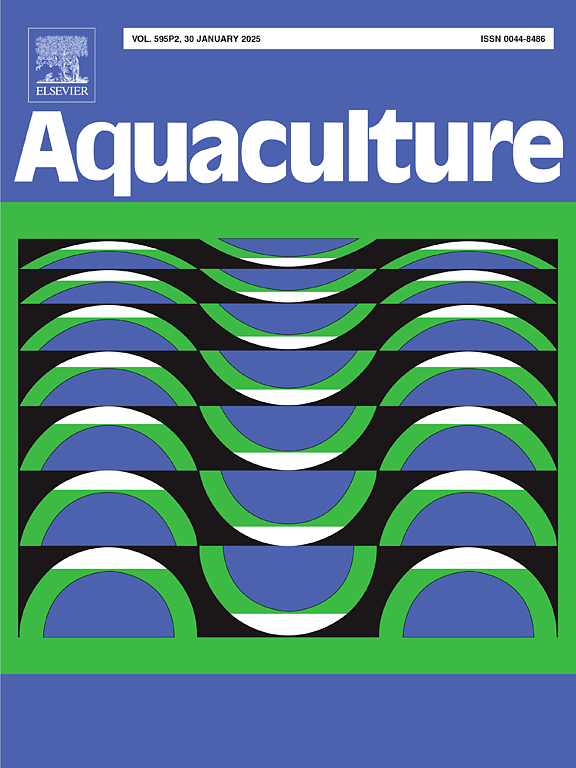The dynamic features and microbial mechanism of nitrogen transformation in small greenhouse farming system of Pacific white shrimp, Litopenaeus vannamei
IF 3.9
1区 农林科学
Q1 FISHERIES
引用次数: 0
Abstract
The proliferation of small greenhouse farms for Litopenaeus vannamei cultivation in China represents an emerging dominant paradigm in shrimp aquaculture. However, inorganic nitrogen accumulation in water during cultivation significantly impacts yield and economic benefits. In this study, water quality analysis, particle size analysis, quantitative Real time-PCR and metagenomics were employed to investigate the main nitrogen transformations, the characteristics of surface sediment (SS) and suspended particulate matter (SP), the attached microbial communities, and the response characteristics of the main functional genes in the small greenhouse. The results indicated that the changes in inorganic nitrogen concentration in the small greenhouse exhibited phased characteristics. The increase in the abundance of ammonia-oxidizing and nitrite-oxidizing bacteria reduced the ammonia and nitrite concentrations in water to less than 1 mg/L during the turbid-turned stage. During the maturity stage, the abundance of key denitrification functional genes (nirS and nirK) both increased to more than 1 × 108 copies/g, promoting the removal of nitrate from the water. SS and SP were mainly composed of silt and clay, providing abundant ecological niches for nitrifying and denitrifying bacteria. The metagenomic results indicated that Defluviimonas, Rhodohalobacter, Nitrosomonas and Nitrobacter were the main nitrifying and denitrifying functional microorganisms in SS and SP. These findings demonstrated that SS- and SP-mediated nitrification and denitrification processes served as primary mechanisms for inorganic nitrogen transformation and removal in small greenhouse farming systems. This study provided critical insights into microbial nitrogen transformation processes in small greenhouse shrimp aquaculture, establishing a theoretical framework for enhanced water quality management and aquaculture practices.
求助全文
约1分钟内获得全文
求助全文
来源期刊

Aquaculture
农林科学-海洋与淡水生物学
CiteScore
8.60
自引率
17.80%
发文量
1246
审稿时长
56 days
期刊介绍:
Aquaculture is an international journal for the exploration, improvement and management of all freshwater and marine food resources. It publishes novel and innovative research of world-wide interest on farming of aquatic organisms, which includes finfish, mollusks, crustaceans and aquatic plants for human consumption. Research on ornamentals is not a focus of the Journal. Aquaculture only publishes papers with a clear relevance to improving aquaculture practices or a potential application.
 求助内容:
求助内容: 应助结果提醒方式:
应助结果提醒方式:


